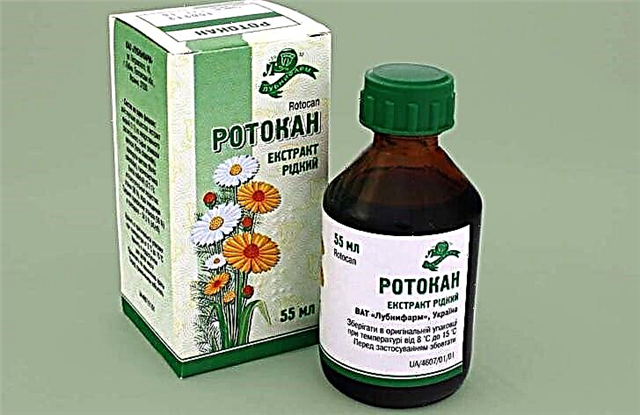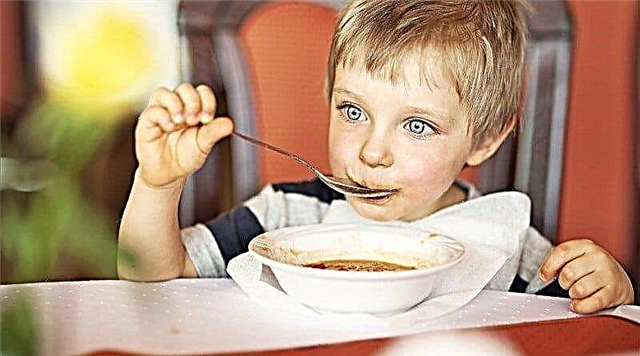Raising a child is a daily and rather hard work, for which the mother receives wonderful emotions from the baby every day as a reward. A newborn baby is very vulnerable to the effects of his environment, so special care and attention from the parents is required. The most unprotected and more vulnerable is the navel, more precisely, an unhealed umbilical wound after discharge from the maternity ward. This is an open gateway for any infection that enters the body and causes omphalitis in newborns. Inflammation of the navel is quite common and requires proper and timely treatment to avoid the development of severe complications.
Navel hygiene rules
- Always keep the umbilical wound open until it heals. A wound wet and damp under clothing and diaper is a favorable environment for bacteria to multiply and live.
- Every day, until the navel heals, bathe the baby in boiled water, adding potassium permanganate to it to make a slightly pink solution.
- Treat the navel at least and no more than 2 times a day. Three times are treated only if the wound is bleeding.
- Before treating the navel, be sure to wash your hands with soap and wipe with an alcohol wipe or antiseptic. Anything you use to treat your belly button should be for your baby only.
- Change your baby's diapers and clothes often. Even if they are dry and clean.
Use diapers with a special belly button cut.
How to properly handle the umbilical wound?
- If the umbilical cord has not yet fallen off, the umbilical ring and umbilical cord should be treated with antiseptic solutions. It is better to use Chlorophyllipt at home. You can use ordinary greenery, but against its background it is difficult to see how the navel is healing. Never try to tear, unscrew or cut the umbilical cord yourself. You can cause bleeding and infection.
- After the umbilical cord falls off, the wound is first treated with hydrogen peroxide, dripping 2 - 3 drops, then dried with a sterile napkin, removing those crusts that are soaked. At the end, the wound is treated with Chlorophyllipt, being careful not to touch the skin around.
What is omphalitis?
Omphalitis in newborns is an inflammatory process of the bottom of the umbilical wound, umbilical vessels, skin and subcutaneous tissue in the navel. Through the wound, the infection enters the tissues surrounding the navel, causing inflammation, then spreads to the umbilical vessels and is fixed in them.
 The greatest likelihood of developing omphalitis in:
The greatest likelihood of developing omphalitis in:
- premature babies;
- babies who were born prematurely;
- children born at home;
- babies with congenital malformations of the navel;
- newborns with infectious skin diseases;
- babies with diaper rash in the navel.
Why does omphalitis occur in children?
 The cause of omphalitis is bacteria. Among the bacteria that cause inflammation of the umbilical wound, staphylococci and streptococci occupy the first place. Other bacteria can also cause inflammation, among them E. coli and Pseudomonas aeruginosa, Proteus. Improper care of the umbilical wound and neglect of hygiene rules contributes to the emergence and development of infection.
The cause of omphalitis is bacteria. Among the bacteria that cause inflammation of the umbilical wound, staphylococci and streptococci occupy the first place. Other bacteria can also cause inflammation, among them E. coli and Pseudomonas aeruginosa, Proteus. Improper care of the umbilical wound and neglect of hygiene rules contributes to the emergence and development of infection.
Normal healing of the umbilical wound is considered when the umbilical cord remains on the 3rd - 5th day of the baby's life, and the navel heals completely within 2 - 4 weeks.
After the umbilical cord falls off, the most dangerous period begins. The wound is open, and the infection easily gets inside. At this time, it is important to pay special attention to the processing of the navel, observing the rules of hygiene.
Several conditions can be attributed to the factors contributing to the development of inflammation:
- Violation of the rules for caring for the baby's navel.
- Disregard for personal hygiene rules.
- Long-term wearing of diapers, rare change of diapers and baby clothes.
- A baby can get an infection from sick family members.
If a family member is ill, try to limit contact between the sick relative and the newborn.
What can be omphalitis?
By the nature of the inflammation, the following forms of omphalitis are distinguished:
- catarrhal;
- purulent;
- phlegmonous;
- necrotic.
Catarrhal omphalitis
 Catarrhal omphalitis is the most favorable form of the disease, the main symptom of which is a long-term non-healing wound at the bottom of the navel with scanty (in a small amount) watery discharge.
Catarrhal omphalitis is the most favorable form of the disease, the main symptom of which is a long-term non-healing wound at the bottom of the navel with scanty (in a small amount) watery discharge.
In this form, fluid is constantly released from the navel, which is why it is often called the "weeping navel." Periodically, the wound is covered with a crust. In some cases, slight redness and swelling may occur around the navel. When palpating the peri-umbilical region, the vessels are not palpable (not felt at hand).
Please note that with the catarrhal form, the general condition of the baby is not disturbed. The kid is active, eats well, his body temperature is normal.
This is the only form of omphalitis that can be treated at home. All others are treated in the surgical department of the children's hospital.
Purulent omphalitis
Purulent omphalitis is characterized by the development of edema (swelling) and hyperemia (redness) of the umbilical ring. The skin around the navel is hot to the touch. In this case, purulent contents are released from the wound. An unpleasant odor can be emitted from the belly button. In some cases, when palpating, inflamed umbilical vessels are determined.
 The disease may be accompanied by an increase in the baby's body temperature. If at this time you pass a blood test from a finger, inflammatory changes will be found in it.
The disease may be accompanied by an increase in the baby's body temperature. If at this time you pass a blood test from a finger, inflammatory changes will be found in it.
If your child's health is not severely impaired, you can be treated at home under the constant supervision of your pediatrician. But if your doctor strongly recommends hospital treatment for you, do not refuse. It is better to be treated in the department under constant supervision than to earn serious complications.
Phlegmonous omphalitis
Phlegmonous omphalitis occurs when the inflammatory process spreads and captures the umbilical region.
With omphalitis of this form, the edema grows, the skin in the navel is hyperemic, the umbilical region protrudes, as if rising above the tummy. The vessels of the anterior abdominal wall expand, the venous pattern on the abdomen is clearly visible. In some cases (if the crust is not removed during processing), an ulcer with uneven edges and fibrin deposits (white, film-like structures) may form at the bottom of the wound in the navel.
 There is a deterioration in the general condition. The child is lethargic, weakly suckles at the breast, often spits up. The baby's skin is pale, or even pale gray in color. Body temperature rises to high numbers (above 38 degrees). The crumb stops gaining body weight, maybe even its loss.
There is a deterioration in the general condition. The child is lethargic, weakly suckles at the breast, often spits up. The baby's skin is pale, or even pale gray in color. Body temperature rises to high numbers (above 38 degrees). The crumb stops gaining body weight, maybe even its loss.
Necrotizing omphalitis
Necrotizing omphalitis is a complication of the phlegmonous form, which, fortunately, is extremely rare. But it is still found in severely weakened and premature babies.
The inflammation process goes deeper. The baby's skin becomes purple-cyanotic. Necrosis (death) of the skin sets in, and it exfoliates from the underlying tissues, forming a large wound. The inflammation can spread to the abdominal muscles and even the intestines. This form is very severe and dangerous in that it can lead to sepsis (penetration of infection into the bloodstream). The general condition of the child with this form is difficult.
How is omphalitis diagnosed?
The doctor can make a diagnosis by examining the baby's navel.
If necessary, he can prescribe a blood test, blood culture and discharge from the navel to determine the pathogen. An ultrasound scan and an abdominal X-ray may also be prescribed.
A consultation with a pediatric surgeon is mandatory.
How is omphalitis treated?
Only the catarrhal form can be treated at home. All other forms are treated in the department of surgery.
The main task in the treatment of omphalitis is to cleanse the umbilical wound.
 Treatment of the disease is divided into several directions (stages).
Treatment of the disease is divided into several directions (stages).
Local treatment - treatment of the umbilical wound:
- wound treatment is carried out 4 times a day using a 3% hydrogen peroxide solution;
- after instilling hydrogen peroxide, clean the wound with a cotton swab;
- the final stage is treatment with antiseptic solutions (Chlorophyllipt, propolis, Dioxidin);
- UFO (physiotherapy using ultraviolet radiation) of the umbilical wound is carried out with the appointment of a doctor;
- it is necessary to bathe the child.
Bathing is contraindicated in severe general condition. In this case, the skin is cleaned with wet wipes.
General treatment is aimed at improving the well-being of the baby.
General treatment includes:
- antibiotic therapy, which is selected according to the results of bacterial culture;
- detoxification (removal of inflammation products from the child's body);
- vitamin therapy;
- the appointment of drugs that enhance the protective functions of the immune system.
Surgical treatment is carried out in the department when complications develop.
Conclusion
Newborn care, in particular the treatment of the umbilical wound, should be carried out daily in accordance with all the rules. In order to prevent the development of inflammation, parents need to take care of the baby seriously and follow all the care recommendations given in the maternity hospital and by the pediatrician during the first patronage of the newborn.
The prognosis with timely and adequate treatment of mild forms of omphalitis is favorable. Therefore, if your belly button does not heal two weeks after giving birth, or if you see redness and pus from the belly button, consult your pediatrician right away.



